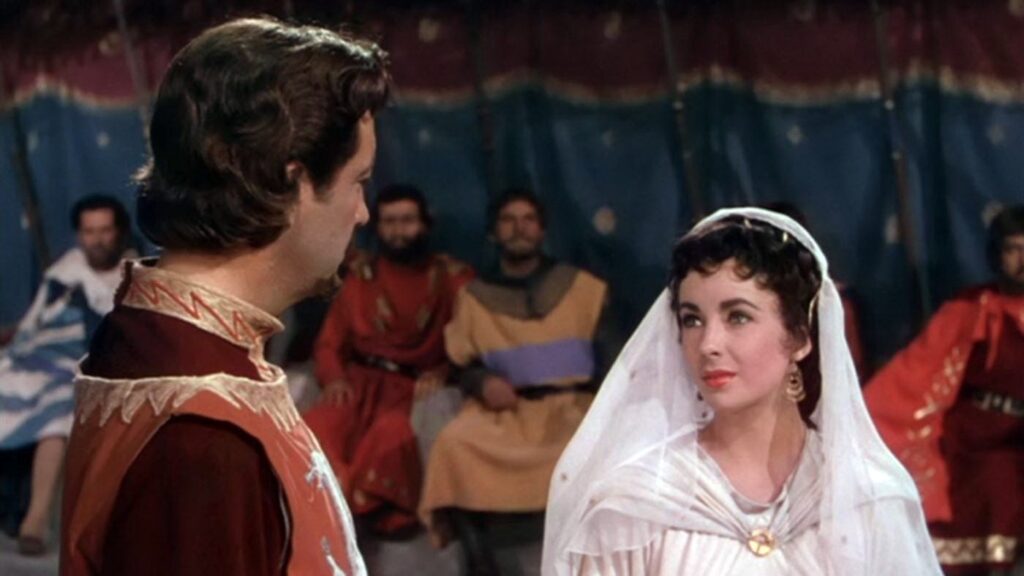
Ivanhoe (1952) was MGM’s big blockbuster and Oscar contender of 1952. Richard Thorpe directs this rousing adaptation of Sir Walter Scott’s novel starring Robert Taylor as Ivanhoe, Elizabeth Taylor as Rebecca, Joan Fontaine as Rowena and George Sanders as De Bois-Guilbert. Ivanhoe is a star studded spectacle that proved so popular that Taylor, Thorpe and MGM repeated the same success (with decreasing budgets each time) with Knights Of The Round Table (1953) and The Adventures Of Quentin Durward (1955).
Richard Thorpe, rather than trying to emulate The Adventures Of Robin Hood (1938), stages the swashbuckling in Ivanhoe in wide shots that encompass numerous fights within a larger battle. The siege of Front de Boeuf uses a deep focus so as to stage one party in the foreground and another along the horizon. The siege is the turning point of Ivanhoe and Thorpe invests his spectacle of violence with enough synchronous detail to give the battle urgency while still preserving its epic scale. There’s not another sequence like this in The Knights Of The Round Table or any of Thorpe’s subsequent films.
Similarly brilliant are the jousting scenes. Thorpe dollies his camera at rapid speed with the knights as if he were filming a cavalry charge in a western. This kineticism comes to a cathartic climax as lances, swords, shields and armor come crashing into each other. These rapid moments of violence are punctuated with shots of the spectators. The action stops and goes in a kind of jilted dance as Miklós Rózsa’s music drives Sir Ivanhoe onward even while his loved ones in the stands gasp with fright.
It’s in the moments between these feats of chivalry that the film Ivanhoe waivers. Of all of their on-screen pairings, Robert Taylor and Elizabeth Taylor are at their most awkward here. Aside from George Sanders, who miraculously has chemistry with every performer, the only two players who really dazzle together are Elizabeth Taylor and Joan Fontaine. Sadly, the sparks between the leading ladies never amount too much more than two brief conversations about how swell Sir Ivanhoe is.
Looking at Ivanhoe as a product of its moment it is easy to see the film as an allegory for the political unrest in post-WWII Europe. Sir Ivanhoe rallies the Jews and Saxons of Britain against the Normans in the wake of the Third Crusade just as the U.S. armed forces rally western Europe against the Soviet Union. The post-war fears of conquest and disunity are at the forefront of Ivanhoe at every turn with Richard I as a messianic force in the wings.
